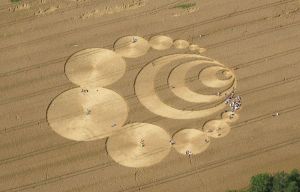troublemakers (the story of land art) by James Crump
The film entitled troublemakers ( no capital letter of course) starts in black and white immediately creating an historical sense, although little black and white film was happening in the 1970s. Still and moving images, black and white and then colour, create a documentary style with current and archived material.
The 1970’s in America were the days of the Vietnam War, the oil crisis and the energy crisis, civil rights issues, religious issues, feminist issues and the introduction of the first Earth Day to celebrate awareness of environmental issues. It was a time of great creativity in the arts and particularly music, and it was the beginning of what came to be known as the “Me Generation”.
Land Art was created mostly by young men who rebelled against what was shown in galleries, moving away from painting and sculptures. These were men who wanted a larger canvas, who wanted to create something vast and indestructible in spaces outside of the urban landscape. Many of them became nomads travelling across empty landscapes looking for a place to begin their work.
Famously, Robert Smithson created the Spiral Jetty.

Spiral Jetty created by Robert Smithson
Public Domain
One of the reasons it is famous is because the making of it and the aerial view of it was filmed and shown as part of an exhibition in a gallery. It seems that there was still a place for these works within the gallery, although the artists seemed uninterested in how they might show their work. They were funded by patrons and people such as Michael Heizer lived in the desert and mostly created Land Art alone. His Double Negative piece required great physical effort and although it can be experienced by walking inside it and by seeing it from the air, at ground level it does not work that well.
Some of the artists were promoted in Avalanche magazine, a publication dedicated to bringing Land Art to the general public and in this way replacing the more conventional art gallery. There appears to have been ambivalence about the use of photography as a representation of the art created. The argument is that photographs cannot be the object, but if there is no record of the object how can people know of its existence?
Land Art is about ideas, it is conceptual and each idea can be unique. Watching the work created for the Attitude show with people simply digging holes in the earth, I began to understand the importance of observing the way a certain activity is done, the specific movement, rhythm, timing. I could see that this is when attitude becomes form. This was quite a revelation for me.
I enjoyed the concepts of Walter de Maria’s work, particularly the Lightning Field, but generally I feel that these early pioneers were more concerned with creating some sort of everlasting memorial, making their mark in a statement so huge that although others might not see it, they knew it was there. Perhaps this was a response to the uncertainty of the times.
So what exactly is Land Art? It is obviously not a recent phenomenon although the movement was named in the 1970s. In Europe we have standing stone circles, hillside white horses and more recently, formal and informal gardens and crop circles.

Crop Circle in Switzerland
Public Domain
All of these are Land Art. In other parts there are also extraordinary works such as the Easter Island heads, the Nazca Lines and the pyramids. For me Land Art of the 1970’s was a way of controlling the environment and is the re-appropriation of natural elements. I do not see it as environmentally sound, particularly when large amounts of concrete were used, but I do admire some of the spectacular concepts.
Rivers and Tides : Andy Goldsworthy Working with Time (2001)
This documentary of Goldsworthy’s land art shows something of the nature of this private man. I learned about his need to create and his deeply passionate relationship to the land, particularly the land where he lives, in Scotland. I am once again reminded of the importance of context and how it enriches the understanding of the artist’s work.
To know that he simply goes into the landscape and finds inspiration for the day from that which he sees, speaks of the spontaneity behind a work that might take hours or days to unfold.
My impression of the man is of an introvert who admits to preferring to be alone, who seeks to find his place in the land. His precision with natural elements such as twigs, leaves and stones is orderly and unlike nature, bringing a tension between the organic and “untidy”, and his artworks of “neatness”. This seems to hold the tension between Goldsworthy as a man wanting to create order and yet wanting to be part of the landscape.
His deep interest in growth alongside life and death is seen in the repeated motif of a dark hole. He speaks of the twigs and branches creating nest-like formations with a central hole and the more two dimensional designs with plant material creating a dark central space. He describes his joy at finding a small green shoot growing through that hole, which sounds like an experience of re-birth.
I am fascinated by the walls he creates, meandering around trees and appearing to cross a stream. He uses “wallers” to build these, recognising that he is not able to build a wall but can direct and shape the project. Again, it feels as if the walls are an attempt to control the environment in some way, just as the “troublemakers” were making their own mark in the 70’s.